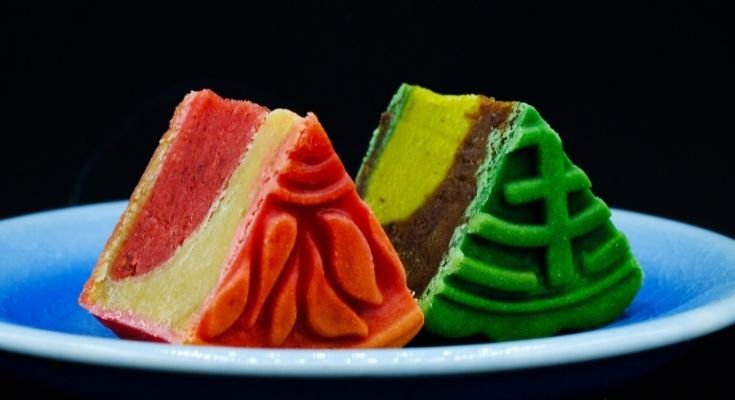The enticing allure of Chinese mooncakes is undeniable. These delectable treats hold a special place in Chinese culture, especially during the Mid-Autumn Festival. With a rich history and a wide range of flavors, Chinese mooncakes have become an integral part of this celebrated tradition.

A Brief History of Chinese Mooncakes
The origin of mooncakes can be traced back to ancient China, where they were created to commemorate a successful rebellion against the Mongol rulers during the Yuan Dynasty.
The round shape of the mooncake symbolized unity and harmony, which were crucial elements during the resistance.
The Traditional Ingredients
Mooncakes are crafted from a harmonious blend of ingredients that showcase the culinary artistry of Chinese culture.
Traditional mooncakes consist of a tender pastry skin enveloping a rich and flavorful filling, often made from lotus seed paste or red bean paste.
Salted egg yolks are sometimes nestled within, adding a delightful contrast to the sweetness.
Variety of Flavors
While the traditional fillings remain beloved, contemporary mooncakes have ventured into a realm of creativity, offering an array of flavors that cater to diverse palates.
From green tea and black sesame to durian and even ice cream, these innovative variations add a modern twist to the timeless treat.
Taste and Texture
The experience of biting into a mooncake is a sensory journey. The delicate crust crumbles gently, revealing the luscious filling within.
The taste is an exquisite balance between the subtle sweetness of the paste and the slightly salty notes from the egg yolk, creating a symphony of flavors that dance on the taste buds.
Regional Differences in Mooncakes
Across China, different regions have put their unique spin on mooncakes, resulting in a captivating tapestry of tastes.
Suzhou-style mooncakes are known for their flaky layers, while Cantonese mooncakes boast a diverse range of fillings. Each variation offers a glimpse into the local culture and culinary heritage.
The Symbolism Behind Mooncakes
Much like the phases of the moon, mooncakes symbolize the cyclical nature of life. They represent reunion and togetherness, inspiring families to gather under the full moon’s glow and create cherished memories.
Mooncakes in Modern Culture
In contemporary times, mooncakes have become more than a traditional treat; they have transformed into luxurious gifts exchanged among friends, family, and colleagues during the Mid-Autumn Festival.
Elaborate packaging and artistic designs have elevated mooncakes to an art form.
Making Your Own Mooncakes
For those seeking a hands-on experience, making mooncakes from scratch can be a rewarding endeavor.
From kneading the dough to crafting intricate patterns, the process is a labor of love that yields a profound appreciation for the craftsmanship involved.
Tips for Enjoying Mooncakes
To fully savor the flavors of a Chinese mooncake, consider warming it slightly before consumption.
This enhances the aromas and elevates the taste. Pair your mooncake with a fragrant cup of tea to create a harmonious pairing that soothes the senses.
Health Considerations
While mooncakes are a delightful indulgence, it’s important to enjoy them in moderation due to their calorie and sugar content.
Opt for smaller portions and explore healthier variations if you have dietary concerns.
FAQs
Mooncakes are closely associated with the Mid-Autumn Festival but can also be found and enjoyed year-round.
Yes, you can. Store mooncakes in a cool, dry place to maintain their freshness.
Yes, many bakeries now offer vegan and gluten-free mooncakes to accommodate different dietary preferences.
The salted egg yolk represents the full moon and is a symbol of completeness and unity.
Conclusion
In a world where traditions often fade with time, Chinese mooncakes remain a steadfast link to the past.
The tantalizing flavors, intricate designs, and the sense of unity they bring continue to capture the hearts and palates of people around the globe.
As you bite into a mooncake during the Mid-Autumn Festival, take a moment to savor not only its taste but also the rich history and cultural significance it holds.
